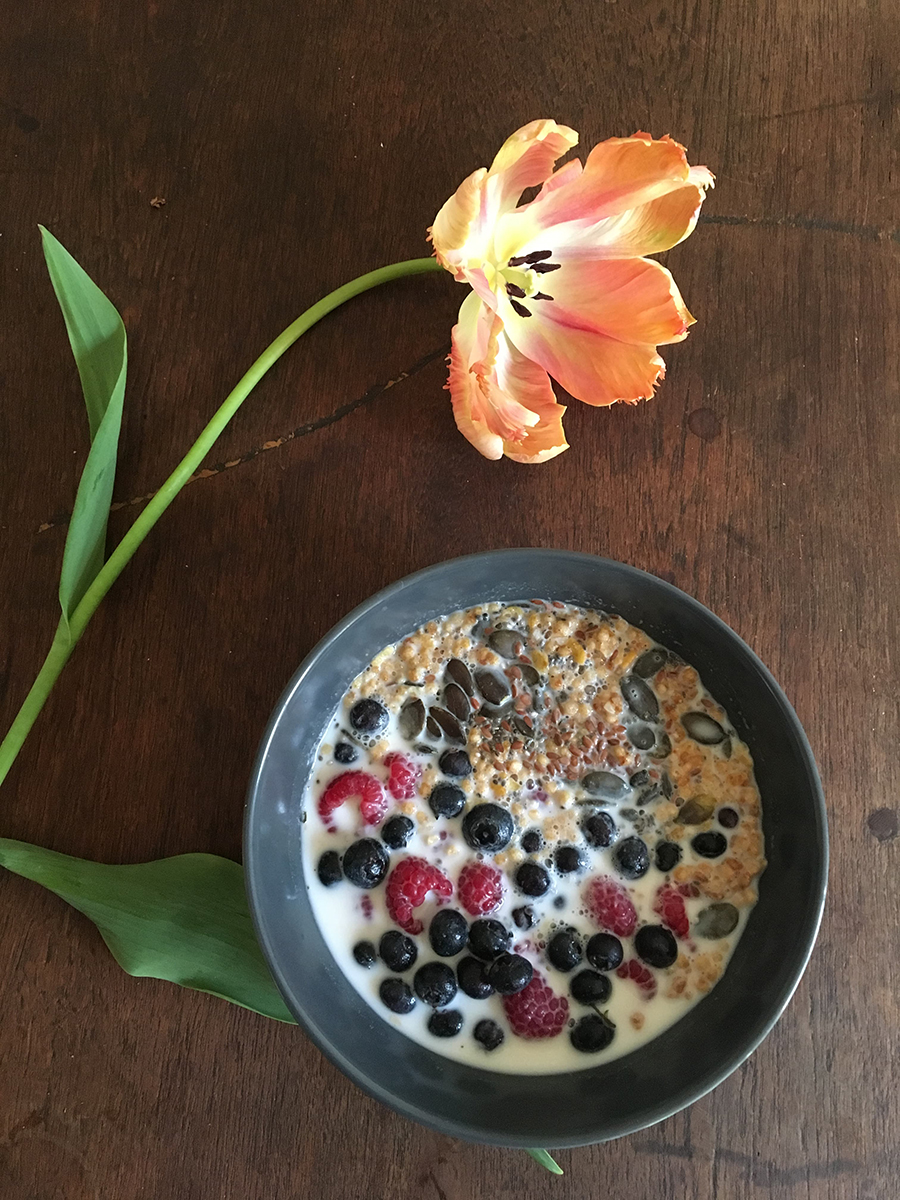Where I crush the most common misconceptions that are keeping you from healing, transforming your health and empowering your life.
Whenever meditation and mindfulness are mentioned in my social life and in my practice, I hear over and over the same kind of false beliefs. Yet, some people who had shut the door on trying meditation seem to have renewed interest right now.
With the ongoing pandemic, mindfulness practices and meditation are put to the forefront. To help everyone feeling stress, anxiety, worries, fears and any other difficult emotion, free meditations, yoga, breathing and other grounding practices are being offered online.
Many are also motivated by the increasing number of articles and studies that underscore the many health benefits of mindfulness practices and meditation: stress reduction, emotion regulation, increasing resilience, etc.
So if you have not yet tried meditation or feel you have given up too quickly, I am writing this article for you.
Buddha was asked:
“What have you gained from meditation?” He replied, “Nothing at all. “However”, Buddha said, “let me tell you what I lost : Anger, Anxiety, Depression, Insecurity, Fear of Old, Age and Death.”
To get you motivated and into action, let’s break that ceiling which stands between you and meditation. I will start by debunking the 3 biggest misconceptions you may have formed from failed experiences or from misunderstanding. Then I will give simple instructions to get started.
Myth# 1 – Meditation is not for me because I can’t stop thinking.
We start with what is by far the top misconception I hear: the great ability of having no thought! I am sorry to put it this bluntly but that state of “having no thought” will only occur … when you die. Just like your lungs know how to breathe, or your heart knows to beat, your brain is hardwired to think!
The late Dan Wegner, who was a professor of psychology at Harvard, conducted experiments and wrote about mental control, and thought suppression (1)(2). In his most notable studies, he used the focus and then the suppression of the images of a white bear and a red Volkswagen in the mind. He wanted to see if it was possible to suppress thoughts.
Two unalterable findings were brought to light:
- Focusing thoughts is short-lived: If you concentrate your mind on anything, in less than 10 seconds, your mind will jump to another thought.
- Trying to not focus on something backfires: the more you try to suppress a thought, the more your mind will think that thought!
So you can see that if you are trying not to think while meditating, you are going to have a very frustrating and unsuccessful meditation. This is probably the one myth that knocks inexperienced newbies off tracks and get them to give up meditating.
So what is meditation about?
While there is no one definition of meditation and there are many ways to meditate, meditation is the most familiar formal mindfulness practice. Meditation practice is deliberately training attention and awareness, by exploring the unfolding experiences in one’s mind, moment to moment, without judgement.
Regular meditation practice aims to cultivate and achieve a clearer and more stable mental state. It builds up resilience, our ability to bounce back from difficult experiences, by helping us change how we relate to our thoughts.
Victor Frank summarizes really well how mindfulness and meditation allow us to better our mental state: “Between stimulus and response there is a space. In that space is our power to choose our response. In our response lies our growth and our freedom.”
Myth# 2 – I don’t have any time to meditate.
Not having time. By far the biggest excuse we brandish to not do many things that are beneficial to us, to our health and ultimately, to our happiness.
Let me first ask you this:
- How much time you spent ruminating on negative experiences in a day?
- How much time do you waste on anger, sadness, grudges, worries, feeling stressed, worthless, unhappy and upset in your life?
Quite a bit to a lot? How is that working for you?
Now think again: What would it mean to your quality of life and productivity if you could regulate the impact of those emotions and not have them take so much room in your life?

one huge short-term benefit of meditation
A 2017 study published in “Consciousness and Cognition” (3) by researchers Mengran Xua, Christine Purdona, Daniel Smileka of the University of Waterloo Canada, along with Paul Selib of Harvard examined the effects of short meditation on cognitive issues such as anxiety.
They found that just 10 minutes of daily meditation can not only help you focus better but that it is also very effective in reducing anxiety and the rumination of negative thoughts that comes with it.
Imagine that, 10 mns every day and not wasting your time and precious energy on negative thoughts and improving how you feel. Imagine how it could improve your day, at home and especially at work where we spend 1/3 of our life! This one short-term benefit alone should be enough to motivate you.
long-term impact of meditation on healthy longevity
But it is not just the short term benefits that should really encourage you to find time to meditate. The long term benefits to our mental health and cognitive abilities are simply too significant to pass.
For example, we know that depression and chronic stress will increase the rate at which our brain ages. This later leads to cognitive issues and disease, including dementia and Alzheimers. Meditation’s positive impact on depression, anxiety and rumination of negative thinking, even cardio vascular health, has been widely studied and recognized.
But new evidence in Neuroscience shows that regular meditation practice not only slows down, but even reverses, biological aging at a cellular level. Meditation decreases the oxidative stress that bolsters our biological age.
How do we know that? More and more, neuroscientists are studying the effects of meditation on our telomeres (4). These markers on our DNA are great predictors of our life expectancy and healthy longevity. It appears meditation helps us by increasing telomeres’ length, thus protecting us from cognitive decline.
So there is more evidence that meditation could help us reverse our biological age. That means the time spent on meditation could help you gain healthy years of life. Just like physical activity helps your body and mind, taking time each day to meditate, for what I call “gym for the mind”, is investing in gaining back years of healthier living.
Myth #3 – I can’t meditate because it is impossible for me to stay still and concentrate
The one factor that has been an issue for many newcomers to enjoy meditation, including myself. It is hard not be distracted by physical sensations caused by the traditional meditation position and posture.
It doesn’t help that when we start meditating, we look up to mentors with years of practice. So we try to emulate them and sit in lotus position on the floor because that is what we think is “the proper way”. And after a few minutes, it gets difficult to keep meditating, because all we can think of is some ache, pain or numbness coming up.
When I first started meditating 20 years ago, I knew nothing of proper posture. I joined a small group of 10 people in a meditation teacher’s apartment near Columbia University. We would sit in a circle, comfortably propped by large pillows on the floor and our back could be supported by a wall.
Unencumbered by discomfort, I fell instantly in love with meditation and the experience of guided exploration. Time would just fly and I could not wait to come back for the next session. This allowed me to really benefit from the practice and helped tremendously in handling the constant worries and anxiety I felt when I was a young woman.
Later, I started Vipassana meditation class and everyone seemed to sit in lotus with ease. No one ever mentioned it, so I naturally tried to mimic others. I became frustrated that my otherwise flexible body, would suddenly ache to the point of uncontrollable distraction.
When I stopped going to class and started meditating at home, it was very difficult for me to keep my practice up. With no eyes on me, the discomforts became my personal hurdle. That is until I went through a very trying time in my life. My first instinct to quiet my very high level of stress, fear and anxiety was to meditate.
I left all my meditation position principles out the window because I was in survival mode. I decided to practice Vipassana meditation on my own terms. I would sit on my bed or on one of my armchairs, with my back propped up against the wall or the seat’s back.
I was then able to truly do and enjoy what I was supposed to do: be in the moment and just follow the ebb and flow of my breath. Whenever thoughts came in, I knew to gently acknowledge them and get back to my breathing.
This allowed me to meditate daily on my own and sooner than I thought, meditation became the anchor that got me through a traumatic experience. Taming my anxiety and stress made the situation more tolerable, it helped me focus better on my options and make better decisions.
Nowadays, I go to workshops and week-long silent retreats. Because our bodies, hips and joints are all made differently, not everyone can sit in lotus for an hour. We all bring equipment and pillows to be comfortable. That on its own could be a whole blog topic.

But please know that what is most important is not to look like you are meditating, but to actually experience it! So, if it means you need to start comfortably sitting on a chair, please do it.
Use this “easy meditation posture”: Sit on a chair or even a comfy armchair with your feet on the ground. Prop up your back with pillows if needed so that your breath may circulate properly. Place your hands on your lap or legs, index touching thumb if you wish.
Jumpstart your daily meditation practice and ensure you enjoy it
Now that these hurdles are out of the way, you may be ready to give meditation a solid try and to make time for regular practice. Here are some suggestions to help you build in your new meditation habit successfully:
- Pick the most convenient time of the day when you know you always have at least 10 minutes. One hack is to tack your new meditation practice to a habit you already have, that is solidly anchored in your day-to-day. For example: I meditate after I have water when I get up in the morning.
- Choose the quietest spot in your home so that you are less inclined to be distracted by voices or traffic. You could even do this in your garden or anywhere you love. It helps, at the beginning, to establish the solace that favors a successful practice.
- Don’t fuss too much about perfect position when you start. If your body aches too much when you are in lotus, even when propped up by a bench, pillows and heavy mats, then just sit in a chair. Use the above “easy meditation posture”. If you are sick, you could even do it in your bed. Keep in mind our bodies are all different.
- When you are ready, maintain you attention on the ebb and flow of your breathe (Vipassana). Gently acknowledge thoughts that arise, without any judgement, and get back to your breathing. If you feel you need guidance, reach out to me and I can teach you how to meditate, wherever you are, in one session!
- If you prefer to start with guided meditation, I recommend you test one of the many guided mediation apps. I recommend Calm, Headspace, Aura, Insight Timer, Stop Breathe and Think, Petit Bambou from France. There are also scores of guided meditations on YouTube, all different lengths.
Most of all remember meditation is a skill you will learn. With regular practice, you will improve how long you do it and its benefits. Mostly, you will start feeling you are calmer and make better choices to respond, instead of following impulse, when the going gets tough. There lies freedom from our negative thinking.
Please feel free to comment and ask questions, this will help me address the concerns that are keeping you from bettering your health and life!
Be safe and healthy,
Namaste,
Cassis
Do you want to find out if my personal coaching programs are right for you?
(1) Wegner, D. M. (1994). White Bears and Other Unwanted Thoughts: Suppression, Obsession, and the Psychology of Mental Control. The Guilford Press: NY, New York.
(2)Wegner, D., Schneider, D., Carter, S., & White, T. (1987). Paradoxical effects of thought suppression. Journal of Personality and Social Psychology, 53 (1), 5-13 DOI
(3) https://www.sciencedaily.com/releases/2017/05/170501094325.htm




